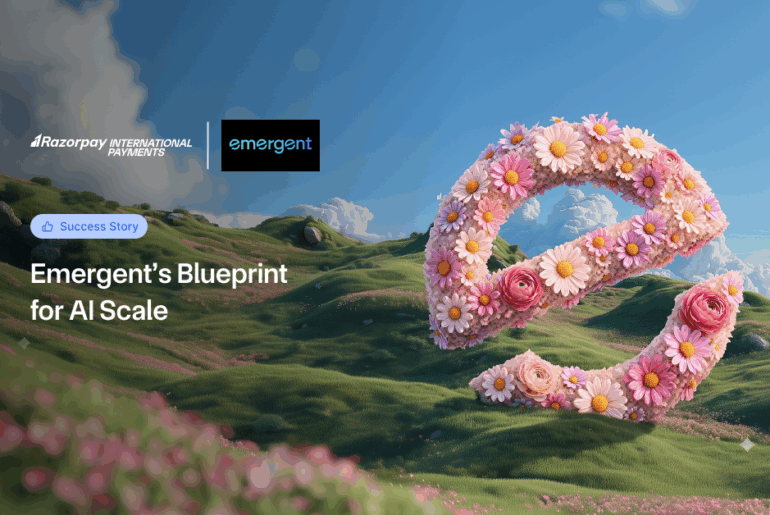Creating a payment gateway is essential for businesses to accept online payments securely. It connects your website to payment networks, ensuring smooth transaction processing. This guide covers the step-by-step process, from basics to implementation and maintenance.
Table of Contents
How to Create a Payment Gateway? A Step-By-Step Guide
Building a payment gateway similar to Razorpay Payment Gateway involves several key steps.
Here’s a detailed breakdown:
Step 1: Understand How Payment Gateways Work
A payment gateway securely transfers payment data between customers, merchants, and banks. It includes:
- Merchant Account: Accepts payments from customers.
- Payment Processor: Handles transactions between banks.
- SSL Certificate: Encrypts payment data for security.
Related Read: What is Payment Processing?
Step 2: Meet Legal and Security Requirements
Follow regulations to ensure safety and avoid penalties:
- PCI DSS: Protects credit card data.
- KYC/AML: Verifies customer identity and prevents fraud.
- GDPR: Safeguards user data in the EU.
Step 3: Define Essential Features
Decide on features like:
- Supported payment methods (cards, wallets, bank transfers).
- Multi-currency support and recurring payments.
- Fraud detection and mobile-friendly design.
Step 4: Build a Secure Infrastructure
Set up a system with:
- Secure Servers: PCI DSS-compliant hosting.
- APIs: Enable integration with websites and payment processors.
- Encryption: Protect sensitive information.
Step 5: Develop, Test, and Launch
- Develop: Create a user-friendly interface and secure backend.
- Test: Check functionality, scalability, and security.
- Launch: Go live with a certified gateway.
Step 6: Maintain and Scale
- Monitor performance and update security regularly.
- Scale to handle more transactions as your business grows.
Related Read: What is Merchant Payment Gateway?
Benefits of Developing Your Own Payment Gateway
Developing a payment gateway in-house offers several advantages:
1. Full Control Over Payment Customization
Building your own payment gateway gives you full control to customize the payment experience. You can tailor features, optimize processes, and create a seamless system aligned with your business needs.
2. Long-Term Cost Savings by Avoiding Third-Party Fees
Although developing a payment gateway involves upfront costs, it eliminates reliance on third-party providers, reducing transaction fees and recurring expenses over time.
3. Turn Your Payment Gateway Into a Revenue Stream
A custom payment gateway can generate additional income by offering its services to other merchants, earning through transaction fees and partnerships.
4. Effortless Integration With Existing Systems
Developing your own gateway ensures compatibility with your current systems, avoiding complex adjustments and creating a streamlined end-to-end payment process.
5. Simplified Global Expansion With Multi-Currency Support
A gateway designed for multiple currencies and payment methods makes it easier to enter international markets, reaching new customer segments effortlessly.
6. Improved Customer Experience Through Secure Payments
A secure and user-friendly payment gateway enhances customer trust and satisfaction, leading to higher loyalty and improved overall experience.
Barriers to Building a Payment Gateway
1. Meeting Complex Compliance Requirements
Adhering to regulations like PCI DSS, KYC, and AML is mandatory but resource-intensive, requiring meticulous effort to avoid penalties and ensure trust.
2. Ensuring Robust Security Against Threats
Securing sensitive customer data involves advanced measures like encryption, tokenization, and fraud detection, demanding specialized expertise and ongoing vigilance.
3. Navigating the Need for Specialized Technical Expertise
Developing a payment gateway requires skilled professionals in payment systems, security, and software development, which can be costly and hard to source.
4. Managing Continuous Maintenance and Support
Ongoing performance monitoring, issue resolution, and customer support demand significant resources, making maintenance a long-term commitment.
5. Overcoming Time and Budget Constraints
The process of building a payment gateway involves high upfront costs and lengthy development timelines, which may not suit businesses with limited resources.
6. Establishing Strategic Financial Partnerships
Partnering with acquiring banks and payment processors requires navigating complex agreements and securing favorable terms, which can be particularly challenging for smaller businesses.
Conclusion
Building a payment gateway is a complex yet rewarding process that demands careful planning, technical expertise, and continuous maintenance. By following the steps outlined in this guide, businesses can successfully develop their own gateway, gaining control, reducing costs, and enhancing the customer experience. Regardless of the approach, prioritizing security, compliance, and user experience is essential for success. Staying updated on industry trends and continuously improving your gateway will help ensure long-term growth and competitiveness in the evolving world of online payments.
Frequently Asked Questions
1. What technical skills are required to develop a payment gateway?
Developing a payment gateway requires expertise in payment systems, security, software development, and programming languages like Java, Python, and PHP.
2. How do I ensure compliance with regulations like PCI DSS?
To comply with PCI DSS, implement security measures like encryption and tokenization, conduct regular audits, and obtain necessary certifications.
3. How do I connect my payment gateway to acquiring banks or processors?
Establish partnerships with acquiring banks or processors and integrate their systems using APIs, completing their certification and compliance requirements.
4. What are the costs involved in building and maintaining a payment gateway?
Costs include development, infrastructure, compliance fees, and ongoing maintenance, which can vary based on the gateway’s scale and complexity.
5. How can I test the security and functionality of my payment gateway?
Test your gateway with functionality, load, and penetration tests, and perform vulnerability assessments with security experts.
6. What is the difference between a payment gateway and a payment processor?
A payment gateway captures and transmits payment data, while a payment processor handles the transaction processing between banks.
7. Can I integrate a custom-built payment gateway with existing e-commerce platforms?
Yes, a custom-built gateway can integrate with platforms like Shopify or WooCommerce through APIs and plugins for seamless communication.



